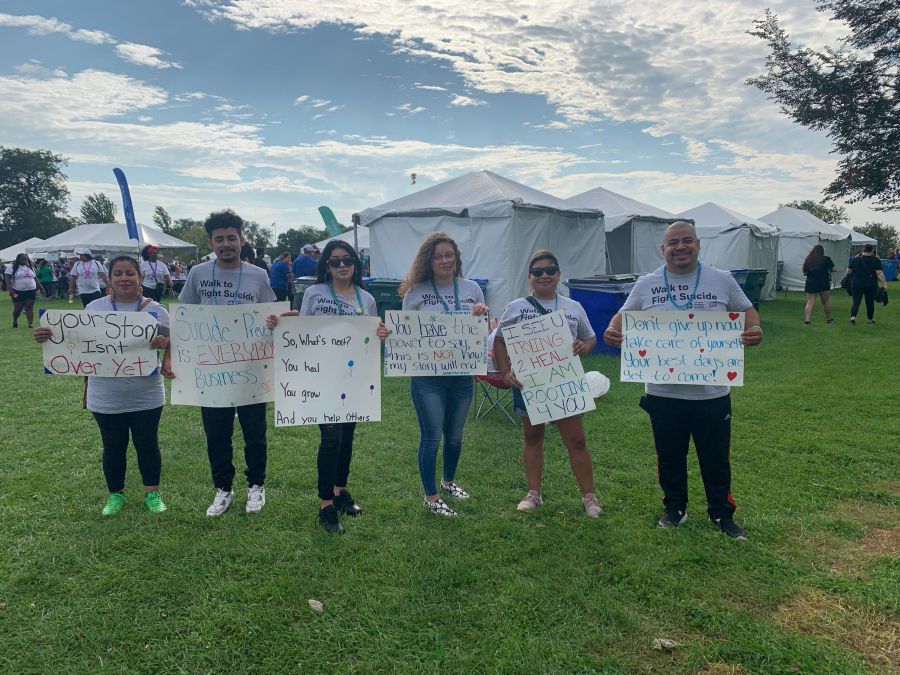How to keep kids mentally healthy next year

Courtesy of Illinois Chapter of the American Foundation, Bethesda Temple Church, Getty Images.
(NewsNation) — As a year of economic uncertainty, mass violence and divisive politics comes to a close, new research shows mental illness is a growing crisis — particularly among young people.
“All of that builds on families, builds on individuals, makes it hard for them to function,” Lynn Bufka, with the American Psychological Association, told NewsNation earlier this month. “The efforts to mitigate the spread of COVID really disrupted children’s lives, and they’re paying the price.”
In fact, a majority of school leaders and parents say things are worse today than a year ago, and doctors across the U.S. say they cannot keep up with the demand for depression and anxiety services.
What can we do to help kids struggling with mental health issues? Here are four solutions NewsNation has investigated this year.
If you or someone you know needs help, resources or someone to talk to, you can find it at the National Suicide Prevention Lifeline website or by calling 1-800-273-8255. People are available to talk to 24/7.
Giving the mind ‘first aid’
When traumatic events happen, kids can be impacted through TV or social media, even if they have not directly experienced the incident.
“The scope of so many of these tragic incidents happening, children feel like they’re living in an environment of threat that if it can happen there, it can happen anywhere,” Marlene Wong told NewsNation earlier this year.
That’s why it’s important for parents, teachers and other adults in kids’ lives to understand the tenets of mental health first aid. The keys of the approach are simple: Focus on listening to the child and suppress the urge to give advice or judge. Ask: “What is the most difficult part of this for you?”
Talking about what happened with someone you trust releases chemicals that can calm you down and help your brain process emotions — and keep one safe until they can access professional help.
And it doesn’t just work for children; a study of similar programs at universities found training professors, resident assistants and others may have prevented tens of thousands of suicide attempts.
Make it OK to get help
Stigma remains a barrier to many getting psychological help, but a group of Black churches in St. Louis shows how community members can reach their neighbors, even when the public health system can’t.
Bridges to Care and Recovery train members from more than 100 churches to be “wellness champions.” They teach about suicide prevention, signs of toxic stress, anxiety or depression, identifying human trafficking and how trauma shows up in adults and children.
Their work is both in-person and virtual and connects with more than 100 local mental health and addiction resources. For many of the churches, a majority of nearby residents live in poverty and many are children under 15.

Often it’s as simple as passing along the number to a crisis hotline, offering to talk if needed, Dameena Cox told NewsNation earlier this year.
“I was struggling with my own mental health issues and the only way I saw it addressed, it was a (Bridges) flier,” said Cox, who is now a wellness champion herself. She tells people, “I turned to God first, but he also had me seek therapy. … And once you get healing, you can help others.”
Don’t just focus on punishing bullies
Schools can put burdens on kids that we wouldn’t expect for working adults, Tyler Black, an emergency psychiatrist at the University of British Columbia, told NewsNation this fall.
Pressure for perfect attendance, hours of homework after a 7- to 8-hour school day peppered with short lunches and recess periods — that can all lead to what ER workers call the “September wave” of kids being admitted for mental illness or harming themselves.
Short-term interventions can help, like allowing students to take a mental health day, offering patients a break from grading when in a crisis, or giving more frequent breaks.
“I encourage parents to really find out if they’re any people who can help them (with the school), whether it’s a doctor or a teacher or community organizer,” Black said. “Ultimately, you’ll have to be a squeaky wheel.”
And for schools developing mental health plans, it’s important to realize bullies and those bullied are often on the two extremes of a spectrum. While bullies show their distress through aggression, victims are often targeted because they retreat within themselves.
Studies have found that interventions that work with bullies, as well as victims, are more effective, although results depend on a lot of factors not easily measured.

Create a plan before and after
There are often just 5 to 10 minutes between a person deciding and then attempting to die by suicide.
During a person’s college years, full of overwhelming emotions, stress and impulsivity can be “the final straw that breaks the camel’s back,” said Steve Moore, who has been an active suicide prevention advocate since his 19-year-old son Paul died by suicide in 2006.
Moore talked with NewsNation in September about concrete steps colleges can take to reduce risk. That includes making bridges or weapons inaccessible, creating suicide awareness programs during freshman orientation, and offering affordable counseling.
And the hours and days after a tragedy has happened are essential in reducing the risk of copycats — particularly how school officials communicate what happened and the resources available to the student body, over social media and to the family.
But fellow students have a part to play as well. Studies show when youth are trained to recognize risk factors, they are more likely to refer a suicidal friend to an adult.














